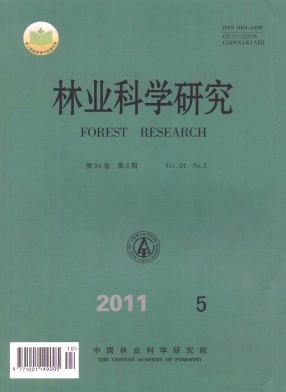|
[1]
|
woodwell G M , Whittaker R H, Reiners W A, et al. The biota and the world carbon budget[J]. Science, 1978,199: 141-146 |
|
[2]
|
Post W M , Emanuel W R, Zinke P J, et al. Soil carbon pools and world life zone[J]. Nature, 1982, 298: 156-159 |
|
[3]
|
袁嘉祖,范晓明.中国森林碳汇功能的成本效益分析[J]. 河北林果研究, 1997, 12(1): 20-24
|
|
[4]
|
Kramer P J. Carbon dioxide concentration ,potosynthesis and dry matter production[J]. Bio Science, 1981, 31:29-33 |
|
[5]
|
王效科,冯宗炜.森林生态系统中生物量和碳贮量的研究历史[M]. 北京: 中国科学与技术出版社, 1995:335-347
|
|
[6]
|
马钦彦,陈遐林,王 娟,等.华北主要森林类型建群种的含碳率分析[J]. 北京林业大学学报, 2002, 24(5): 96-100
|
|
[7]
|
Zhang H, Zhang G L, Zhao Y G, et al. Chemical degradation of a Ferralsol (Oxisol) under intensive rubber(Hevea brasiliensis) farming in tropical China[J]. Soil & Tillage Research, 2007, 93: 109-116 |
|
[8]
|
杨景成, 黄建辉, 潘庆民, 等.西双版纳不同热带生态系统土壤有机质的光谱学特性[J]. 植物生态学报, 2004, 28(5): 623-629
|
|
[9]
|
房秋兰, 沙丽清.西双版纳热带季节雨林与橡胶林土壤呼吸[J]. 植物生态学报, 2006, 30(1): 97-103
|
|
[10]
|
周文君,沙丽清,沈守艮,等.西双版纳橡胶林土壤呼吸季节变化及其影响因子[J].山地学报,2008, 26(3): 317-325
|
|
[11]
|
池富旺,张培松,罗 微,等.中大尺度下橡胶园土壤全氮和有机质含量的空间分布特征[J]. 热带作物学报, 2009, 30(5): 613-619
|
|
[12]
|
杨 昆, 管东生. 森林林下植被生物量收获的样方选择和模型[J]. 生态学报, 2007, 27(2): 705-714
|
|
[13]
|
森林土壤有机质的测定及碳氮比的计算.中华人民共和国林业行业标准[S]. 1999, LY/T 1237
|
|
[14]
|
鲍士旦. 土壤农化分析 [M]. 第三版,北京: 中国农业出版社, 2000
|
|
[15]
|
尉海东, 马祥庆.中亚热带不同发育阶段杉木人工林生态系统碳贮量研究[J]. 江西农业大学学报, 2006, 28(2): 239-243,267
|
|
[16]
|
方 晰,田大伦,项文化.速生阶段杉木人工林碳素密度、贮量和分布[J].林业科学,2002, 38(3):14-19
|
|
[17]
|
康 冰,刘世荣,张广军,等.广西大青山南亚热带马尾松、杉木混交林生态系统碳素积累和分配特征[J]. 生态学报, 2006, 26(5): 1320-1329
|
|
[18]
|
钟羡芳,杨玉盛,高 人,等.老龄杉木人工林生态系统碳库及分配[J]. 亚热带资源与环境学报, 2008, 3(2): 11-17
|
|
[19]
|
田大伦,方 晰,项文化.湖南会同杉木人工林生态系统碳素密度[J]. 生态学报, 2004, 4(11): 2382-2386
|
|
[20]
|
雷丕锋, 项文化, 田大伦, 等. 樟树人工林生态系统碳素贮量与分布研究[J]. 生态学杂志, 2004, 23(4): 25-30
|
|
[21]
|
何 斌, 刘运华, 余浩光, 等. 南宁马占相思人工林生态系统碳素密度与贮量[J]. 林业科学. 2009, 45(2):6-11
|
|
[22]
|
韩氏杰.中国陆地生态系统碳循环的生物地球化学过程[M]. 北京: 科技出版社,2008
|
|
[23]
|
蒋菊生, 王如松. 橡胶林固定CO2和释放O2的服务功能及其价值估计[J]. 生态学报, 2002, 22(9): 1545-1551
|
|
[24]
|
尉海东, 马祥庆.不同发育阶段楠木人工林生态系统碳贮量研究[J]. 烟台师范学院学报:自然科学版, 2006, 22(2): 130-133
|
|
[25]
|
周玉荣, 于振良, 赵士洞.我国主要森林生态系统碳贮量和碳平衡[J]. 植物生态学报, 2000, 24(5): 518- 522
|
|
[26]
|
莫江明, 方运霆, 彭少麟, 等.鼎湖山南亚热带常绿阔叶林碳素积累和分配特征[J]. 生态学报, 2003, 23 (10): 1970-1976
|
|
[27]
|
吴仲民, 李意德, 曾庆波, 等.尖峰岭热带山地雨林C素库及皆伐影响的初步研究[J]. 应用生态学报, 1998, 9(4): 341-344
|
|
[28]
|
杨玉盛, 林先富, 俞新妥, 等.杉木套种山苍子模式结构与生物量初步研究[J]. 福建林学院学报, 1991, 11 (4): 341-348
|
|
[29]
|
Cotter M, Martin K, Sauerborn J. How do "Renewable Products" impact biodiversity and ecosystem services-the example of natural rubber in China[J]. Journal of Agriculture and Rural Development in the Tropics and Subtropics,2009, 110 (1): 9-22 |
|
[30]
|
Zhang M, Fu X H, Feng W T, et al. Soil organic carbon in pure rubber and tea-rubber plantations in southwestern China[J]. Tropical Ecology, 2007, 48: 1-7 |
|
[31]
|
Suchanek T H, Mooney H A, Franklin J F, et al. Carbon dynamics of an old-growth forest [J]. Ecosystems, 2004, 7: 421-426 |





 DownLoad:
DownLoad: